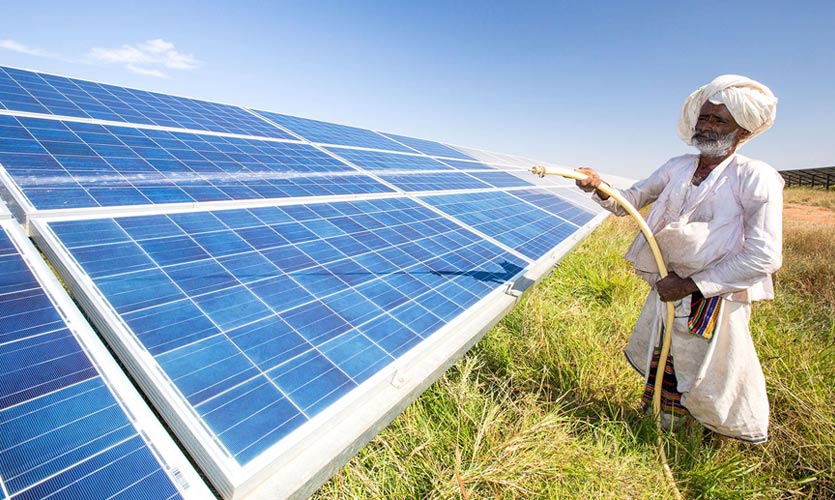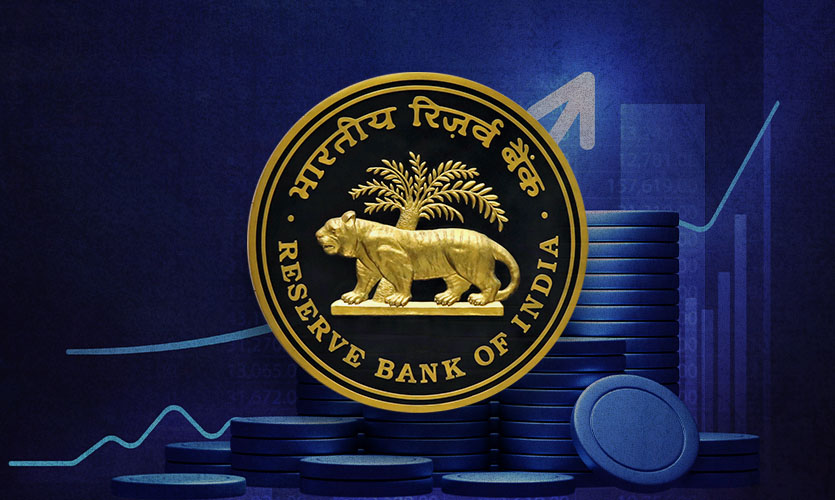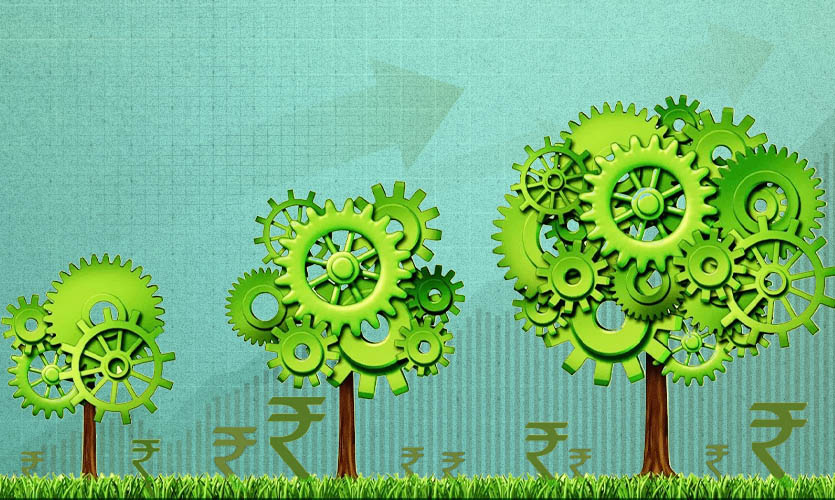The Paris Agreement of December 2015 bound every country in the world to limit the globe’s temperature to 1.5ºC by 2050. A recent study by the Research Institute for Humanity and Nature states that India is the third-largest emitter of greenhouse gases and accounts for 2.46 billion metric tonnes of carbon or 6.8 percent of the total global emissions. India’s journey to push for green transition through ramping up urgent decarbonisation efforts and investments within the next ten years is a matter of international interest.
In March 2000 when the former US President Bill Clinton visited India he highlighted the rising need to “protect our earth” while seeing the fate of the Taj Mahal, thus setting up talks on the future of green diplomacy set to bloom between India and the US.
The current US President Joe Biden has given new momentum to the climate change movement. When coordinating calls with Prime Minister Narendra Modi in February, they declared their commitment to the bilateral relationship, identifying tackling the threat of climate change and launching the global economic recovery among their top priorities. Forwarding green diplomacy continues to be a central pillar of their partnership.
The recent virtual Quad meeting between Australia, India, Japan and the US, saw the nations pledge to strengthen climate actions globally by focusing on mitigation, adaptation, resilience, technology, capacity-building, and climate finance. Ensuring that the leaders will hold an in-person summit by the end of 2021, they reaffirmed that the green agenda is a policy imperative to the US and India.
India took large strides when it announced its intended nationally determined contributions (INDCs) for climate justice back in October 2015. The goal is to reduce the emissions intensity of its GDP by 33 to 35 percent from the 2005 level, achieve about 40 percent cumulative electric power installed capacity from non-fossil fuel-based energy resources, and create an additional carbon sink of 2.5 to 3 billion tonnes of CO2 equivalent through additional forest and tree cover, by 2030. Furthermore, in his address at the Climate Action Summit in 2019, the prime minister increased the initial commitment to achieve 175 gigawatts (GW) of energy capacity through renewable sources by 2022 to 450 GW by 2030.
India’s Journey So Far
According to the World Resources Institute (WRI), for the world to reach its mid-century targets or meet preliminary reductions by 2030, it would require: (1) ramping up renewables; (2) transition to electric vehicles; (3) an increase in tree cover; (4) phasing out coal power; (5) use of low carbon fuels and; (6) electrifying industries. The majority of these goals are applicable to India, however, the path to green transition in the Indian context would involve making efforts to increase renewable energy capacity along with investing in clean coal plants, alternate energies (nuclear and natural gas), managing rapid urban expansion by improving public transportation; solid waste management (SWM) and building energy-efficient infrastructure (commercial and residential).
The linchpin factor to achieve the above goals will require a significant infusion of capital from both Indian and international investors. Unfortunately, the green investment pathway currently faces multiple problems: lack of policy stability, lack of long term financing, various risks and low rate of return with low carbon projects, lack of capacity in market actors and above all the behavioural issue and unwillingness to act. Many depend on the India – US joint leadership to mobilise private finance for India’s green transition, which provides a good opportunity for diplomatic and business collaborations.
Meanwhile, the Indian government has scaled up its efforts, with renewable energy forming nearly a quarter of India’s total installed power generation capacity, up from 13 percent in 2014. The current solar tariff rates are at ₹2 per kilowatt an hour and one unit of electricity. These rates have stabilised at 20-30 percent below the cost of thermal power and half the price of new coal-fired power.
India depends on technology imports from other countries for its transition, primarily due to its delayed entry into the manufacturing space. However, as a part of the Atma Nirbhar Bharat campaign, a movement towards self-reliance, India is aiming to end dependence on solar equipment imports, including panels. This has led to a pickup in research and development spending in the solar technologies space with an increased focus on battery technologies, which will be crucial in solving the drawback with renewable energy and its dependence on weather conditions.
The Indian Railway Finance Corporation has recently established a Green Bond Framework for fundraising, for financing the Dedicated Freight Corridor project and electrification of the railways, helping India establish an agency in its green financing initiatives. The month of June saw India’s Oil Secretary Tarun Kapoor announce spending of almost $7 billion to boost making gasoline with 20 percent ethanol by five years to 2025, in turn rolling out a greener mix of gasoline that may cut its dependence on foreign oil and save India $4 billion annually.
COVID-19 has dampened the green transition progress in many countries. Until April 2021, India had installed a renewable energy capacity of about 95 GW including 40.5 GW of solar power, with industry experts pointing out that we may miss the target of installing 175 gigawatts (GW) of renewable energy capacity by 2022. With economic stimulus packages by governments globally being allocated to issues related to boosting the economy, building better health infrastructure, improving unemployment conditions, India saw a few bright spots in its economic stimulus that encouraged the green agenda with its support for rural job creation and support for afforestation (US$792 million), as well as medium-term policies based on production linked incentives for building domestic manufacturing capacity such as battery storage (US$2.6 billion).
Is It Green Or Brown Progress?
In contrast, the economic stimulus package also saw spending on coal infrastructure (US$6.5 billion), including the commercial mining of coal. In an effort to boost economic growth post-COVID-19 first wave lockdown, the government introduced policies to encourage privatisation and commercialisation of the mining sector. One of the policy changes that received a lot of criticism from environmentalists was the release of the draft Environmental Impact Assessment (EIA) notification 2020 which is a replacement of the EIA notification 2006. The new draft leaned towards diluting the 2006 version through reduced public participation and favour industrial projects that violate rules and operate without environmental clearance.
November 2020 saw the Union Environment Minister Prakash Javadekar–led Ministry of Environment, Forest and Climate Change (MoEFCC) announce rules that would make it easier for thermal power plants to change the source of coal from imported to domestic without seeking an amendment in environment clearance. Recently, the government also pushed back deadlines for coal-fired power plants to adhere to the new emission norms by up to three years, assuring utilities that missed the new target could continue operating after paying a penalty. This is the third time the government has extended the deadlines. The initially set 2017 deadline was extended to 2022, and the new order in April 2021 declares that plants near populous regions and the capital New Delhi will have to comply by 2022. Utilities in less polluting areas have up to 2025 to comply or retire units.
The push for a green transition in India will not lead to the eventual closure of the coal mining sector.
Coal India Limited (CIL), one of the largest coal producers in the world, is expected to open 55 new coal mines and expand at least 193 present ones. Together, these two steps will ensure an increase of 400 million tonnes in coal production. CIL has about 463 coal blocks with which the country can continue thermal power production for another 275 years.
Read more: Here’s How The G7 Global Tax Will Impact India
Why It Must Be A Fair Transition
Mining statistics reveal that the country’s major mineral area is under its richest forests and in the watersheds of its key rivers. These are homes to India’s poorest people, mainly tribal communities and forest dwellers. A report by the Land Conflict Watch (LCW), a research group, recorded 703 conflicts across India affecting the lives and livelihoods of 6.5 million people. With land conflicts over mining projects being the second highest cause of distress, 852,488 citizens have been affected by them. While mining is often presented as a solution for development, we must not ignore the precarious nature of these so-called jobs in the mining sector. There is the possibility that cheap labour will be hired in hazardous conditions of on-site stay and with no safety.
The construction of new mining plants is not the only source of land conflict. Large scale solar and wind projects are already impacting fertile and pastoral land for many of the communities in India. According to the US-based Wildlife Energy and Community Coalition, India needs to weigh in on important questions on whether there is sufficient available land, if comprehensive environmental impact assessments are conducted prior to construction and whether a proper compliance of environmental safeguards is carried out after a project is operational.
Building large scale photovoltaic plants on freshwater sources could cause irreparable harm to aquatic life and ecology and powering electric vehicles from electricity generated by fossil fuels would increase mining and pollution. The Lakshadweep islands facing rapid erosion, a turbulent sea and rising ocean temperatures could further increase due to the brunt of tourism. Along with the 94.8 percent of the Scheduled Tribe island residents set to pay a heavy price at the cost of development due to the new guidelines, the interlinked nature of agriculture and climate change can leave farmers, especially women farmers, highly vulnerable to crop failures and loss of livelihood, pushing them to severe poverty. All these issues highlight the lack of sustainable policies being implemented by the government that bring all the stakeholders together to draw up plans that are built on resilience and people.
The pandemic saw mass poverty rise in India. The number of people earning less than $2 rose up to 134 million from 60 million in just a year, whereas in contrast, India’s billionaires saw their wealth increase by 35 percent during the pandemic despite a slowdown in India’s economic growth. It is imperative when planning India’s recovery, to contextualise India’s climate change policies against its larger socio-economic situation. India needs to ensure that there is no tradeoff between economic growth and biodiversity protection. Experts warn that irresponsible energy development, while it continues to put money in the hands of the rich, won’t help in India’s pursuit of a clean energy transition. A just green transition is one where India propels a green transition that is inclusive and focused on empowering its marginalised while promoting biodiversity.










